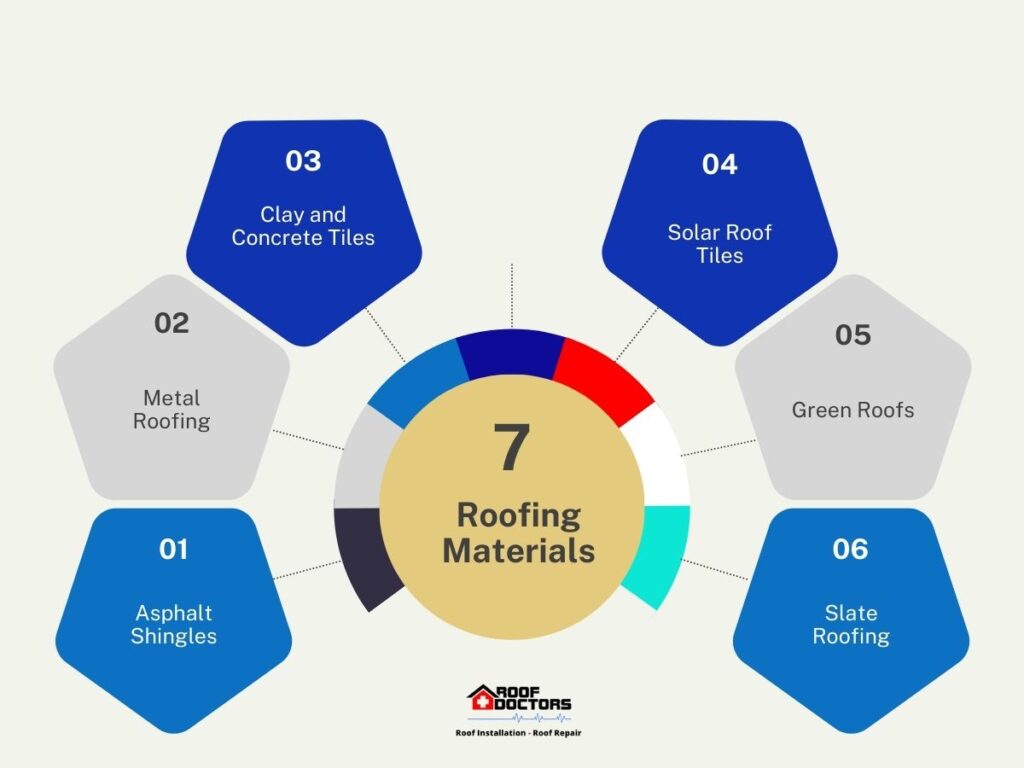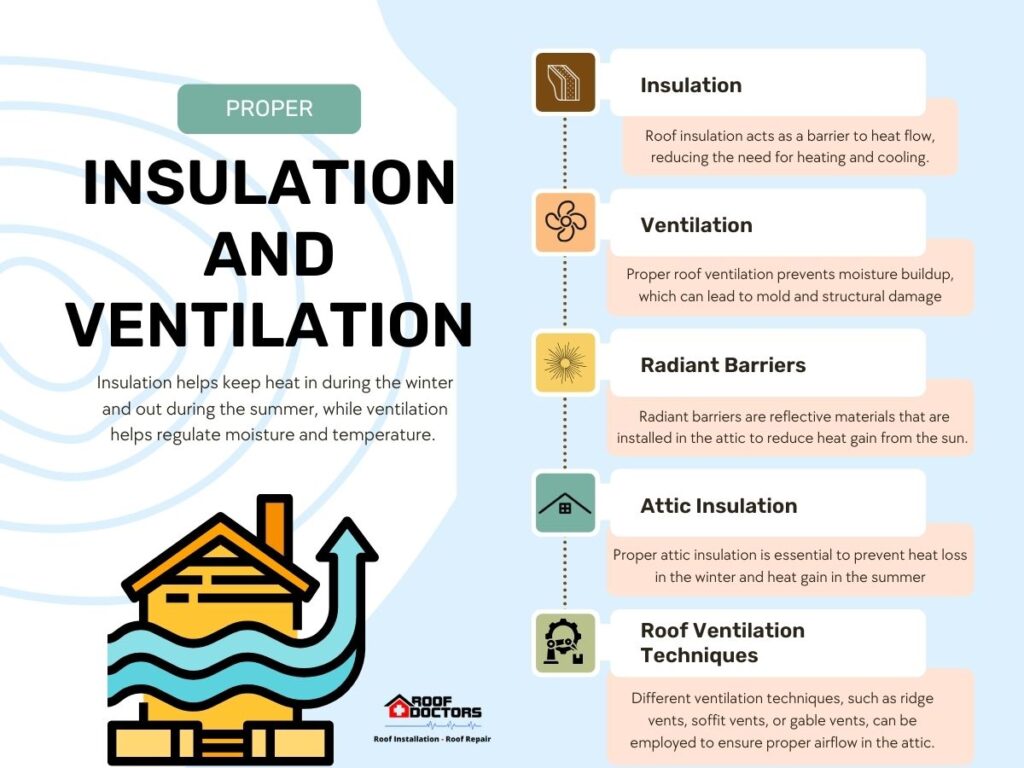In the modern era, where sustainability and energy conservation are at the forefront of architectural and environmental considerations, the role of roofs in home energy efficiency has emerged as a vital subject. The big question lingering in the back of your mind is what is the role of roofs in home energy efficiency?
Far from being just a sheltering structure, the roof is a complex component that significantly influences a home’s energy consumption. Its design, materials, insulation, and maintenance all play a crucial part in determining how energy-efficient a home can be.
This article delves into the multifaceted role of roofs, exploring how they contribute to energy savings, environmental stewardship, and long-term financial benefits. From traditional roofing materials to innovative design techniques and future technologies, we will uncover the dynamic relationship between roofs and home energy efficiency. Let’s star
Overview of The Importance of Energy Efficiency
The roof is often an overlooked part of a home’s energy efficiency equation. However, it can significantly impact the heating and cooling costs, contributing to a home’s overall energy consumption. By understanding the role of roofs in energy efficiency, homeowners can make informed decisions that lead to lower energy bills and a reduced carbon footprint.
Energy efficiency is not just about saving money; it’s about reducing energy consumption and the associated environmental impact. Efficient use of energy reduces greenhouse gas emissions, contributing to the fight against climate change. The roof, being a significant part of the building envelope, plays a crucial role in this context.
Roofing Materials
The choice of roofing material can have a profound impact on a home’s energy efficiency. Different materials have varying levels of thermal resistance, reflectivity, and durability.

Asphalt Shingles
Asphalt shingles are a common roofing material known for their affordability and ease of installation. However, they may not be the most energy-efficient option, especially in hot climates, where they can absorb heat.
Metal Roofing
Metal roofs are known for their reflectivity, which can help reflect solar radiation away from the home, reducing cooling costs. They are also durable and can last for decades with proper maintenance.
Clay and Concrete Tiles
Clay and concrete tiles are known for their durability and thermal mass, which can help regulate indoor temperatures. These materials are often used in hot climates where their ability to reflect and dissipate heat can reduce cooling costs.
Slate Roofing
Slate is a natural stone that offers exceptional longevity and aesthetic appeal. Its density provides excellent insulation, helping to maintain a stable indoor temperature.
Solar Roof Tiles
Solar roof tiles integrate solar panels into the roofing material, allowing homeowners to generate their own electricity. This innovative approach not only reduces energy costs but also contributes to renewable energy production.
Green Roofs
Green or “living” roofs are covered with vegetation and soil. They provide excellent insulation and can help regulate the temperature within the home. Green roofs also offer environmental benefits, such as reducing stormwater runoff and providing habitat for wildlife.
Roof Design
The design of the roof can also influence energy efficiency. Factors such as slope, orientation, and shape can affect how the roof interacts with the sun’s rays and wind patterns.
Slope and Orientation
A roof’s slope and orientation can determine how much sunlight it receives. In colder climates, a south-facing roof with a moderate slope can maximize solar gain, helping to heat the home. In contrast, in hot climates, a roof designed to minimize solar exposure can reduce cooling costs.
Cool Roofs
Cool roofs are designed to reflect more sunlight and absorb less heat than standard roofs. They can be made from reflective materials or coated with special reflective paint. Cool roofs can significantly reduce cooling energy needs, especially in hot climates.
Roof Overhangs
Roof overhangs can provide shade to windows and walls, reducing solar heat gain in the summer. The length and angle of the overhangs can be designed to allow winter sun to enter the home, contributing to passive heating.
Integrated Solar Design
Roofs can be designed to integrate with solar panels efficiently. The orientation, slope, and lack of obstructions can maximize solar energy collection, further reducing energy costs.
Insulation and Ventilation
Proper insulation and ventilation are key to a roof’s energy efficiency. Insulation helps keep heat in during the winter and out during the summer, while ventilation helps regulate moisture and temperature.

Insulation
Roof insulation acts as a barrier to heat flow, reducing the need for heating and cooling. The type and amount of insulation should be chosen based on the local climate and building codes.
Ventilation
Proper roof ventilation prevents moisture buildup, which can lead to mold and structural damage. It also helps regulate temperature, reducing the strain on heating and cooling systems.
Radiant Barriers
Radiant barriers are reflective materials that are installed in the attic to reduce heat gain from the sun. They can be particularly effective in hot climates, reflecting radiant heat away from the living spaces.
Attic Insulation
Proper attic insulation is essential to prevent heat loss in the winter and heat gain in the summer. Various materials, such as fiberglass, cellulose, or foam, can be used, each with different insulating properties.
Roof Ventilation Techniques
Different ventilation techniques, such as ridge vents, soffit vents, or gable vents, can be employed to ensure proper airflow in the attic. These techniques help in preventing moisture problems and maintaining a comfortable indoor temperature.
Maintenance and Upgrades
Regular maintenance and timely upgrades can ensure that a roof continues to contribute to a home’s energy efficiency.
Maintenance
Regular maintenance can identify and fix issues like leaks, damaged shingles, or inadequate insulation. Addressing these issues promptly can prevent more significant problems and maintain the roof’s energy efficiency.
Upgrades
Upgrading to energy-efficient roofing materials or adding additional insulation can be a worthwhile investment. Government incentives and rebates may be available to offset the costs of these upgrades.
Regular Inspections
Regular inspections by roofing professionals can identify potential problems early, such as loose or damaged shingles, leaks, or inadequate ventilation. Early detection and repair can prevent costly damage and maintain the roof’s energy efficiency.
Energy-Efficient Upgrades
Upgrading to energy-efficient roofing materials, adding insulation, or installing solar panels can be significant investments with long-term benefits. Homeowners should consult with roofing and energy experts to determine the best options for their specific needs and climate.
There You Have It
The role of roofs in home energy efficiency is multifaceted and significant. From the choice of materials and design to insulation, ventilation, and maintenance, every aspect of roofing contributes to a home’s overall energy performance.
In a time where sustainability is key, understanding the role of roofs is essential for homeowners, builders, and designers alike. Future innovations promise even more opportunities for energy conservation, making the roof not just a barrier against the elements but an active participant in a home’s energy ecosystem.
In a nutshell, the roof’s role in energy efficiency is a vital consideration that offers substantial benefits for both the environment and the wallet, reflecting a responsible approach to modern living.


